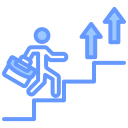Chosen theme: 2. Navigating IT Career Progression Stages. This home page is your friendly map from first tech role to strategic leadership, filled with practical steps, real stories, and momentum-building habits. Join the conversation and subscribe for weekly stage-specific playbooks.
Mapping the Modern IT Career Ladder
Foundations: Intern to Junior
These stages reward curiosity, dependability, and shipping small wins. Focus on closing tickets, learning your stack’s edges, and writing clear notes. Ask for code reviews, log lessons, and share what you learn to accelerate through early milestones.
Leveling Up: Mid to Senior
Mid-level engineers build reliably; seniors shape direction and unblock others. Grow ownership from tasks to features to systems. Measure impact in outcomes, not hours. Start mentoring, document decisions, and demonstrate initiative that ties to measurable business goals.
Fork in the Road: IC or Management?
As you approach senior, choices widen: deepen as an individual contributor or pursue people leadership. Try leading a project charter or mentoring pod to sample responsibility. Share your preference with your manager and request scoped, reversible experiments.
Skills That Compound at Every Stage

Depth and Breadth in Technology
Depth lets you solve gnarly problems; breadth helps you choose the right tool. Alternate cycles of specialization with short exploration sprints. Publish internal notes that compare trade-offs, so teammates benefit while you cement learning through teaching.

Communication That Moves Work Forward
Clear writing quietly boosts promotions. Write decision records, concise status updates, and risk calls. Translate complexity into stakeholder-friendly language. Ask, “What decision does this unblock?” to frame updates that invite action, not confusion.

Learning Systems and Feedback Loops
Set a cadence: weekly reflection, monthly skill deep-dives, quarterly scope review. Track wins, failures, and questions in a one-page log. Share highlights with your manager to co-create opportunities that stretch your capabilities without overwhelming you.
Crafting a Career Narrative That Travels
Evidence-Based Resumes and Portfolios
Swap task lists for measurable outcomes. Use verbs and numbers: reduced latency by 37%, migrated three services with zero downtime, mentored four juniors. Link diagrams, RFCs, and demos. Make your work discoverable and scannable in under 60 seconds.
Interview Stories with Measurable Impact
Use context, challenge, action, result. Explain trade-offs, failures, and what you changed next time. Tie technical choices to user or revenue impact. Practice out loud, record, refine. Invite peer feedback to sharpen pacing and clarity.
Public Presence That Opens Doors
Thoughtful posts, talks, or open-source contributions compound visibility. Start small: a bug write-up, a diagram thread, a lunchtime lightning talk. Ask readers what they want next to build a responsive, opportunity-attracting signal over time.
Finding Mentors Who Fit Your Stage
Match mentors to immediate goals: code review depth, architecture decisions, or organizational navigation. Keep meetings structured with a running agenda. End each session with one experiment to try before the next, and report results honestly.
Becoming a Mentor to Accelerate Mastery
Teaching reveals gaps in your own understanding. Offer office hours, pair-programming slots, or onboarding guides. Track mentee outcomes to demonstrate leadership. Seniors who mentor consistently develop staff-level influence without changing titles yet.
Building Networks Across Teams and Communities
Join architecture reviews, guilds, and external meetups. Ask generous questions and share notes publicly. Networking is easier when you bring artifacts: write-ups, dashboards, or prototypes. Opportunities follow people who reliably make others’ work easier.
Request the leveling guide, then map your current work to each criterion. Identify two gaps you can close within a quarter. Align projects to those gaps so progress becomes visible and unambiguous during calibration discussions.
Performance, Promotions, and Pay
From Senior to Staff, Principal, and Architect
Leading Without Authority Across Functions
Staff engineers align product, design, and operations toward outcomes. They convene the right people, surface trade-offs, and create decision safety. Practice facilitation, write crisp proposals, and model calm during incidents to earn durable influence.
Owning Scope and Setting Technical Strategy
Expand from features to domains. Draft a north-star architecture, migration milestones, and risk registers. Measure success with reliability, speed, and developer experience. Share roadmaps that show gradual value, not big-bang rewrites, to maintain trust.
Influence Through Writing and Design Reviews
High-leverage leaders write well. Create RFC templates, rationale sections, and review checklists. Praise good trade-offs explicitly. Capture dissent and decisions transparently so future engineers understand why this path, not just how it was built.
Handling Transitions, Plateaus, and Burnout
Breaking Stagnation with Deliberate Practice
When growth slows, isolate one limiting skill. Design weekly reps, feedback, and reflection. Example: one architecture review per week for six weeks. Track confidence and outcomes. Small, focused cycles beat vague, overwhelming resolutions.

Real Stories from the Field
Diego began automating ticket triage with scripts, then built a small incident bot. He shared metrics showing reduced mean time to resolution. That portfolio earned him a rotation, then a full SRE role with clear, measurable impact.


Real Stories from the Field
Priya’s bug reports always contained user context and suggested experiments. She started shadowing sales calls and quantifying friction. Leadership noticed her pattern recognition and invited her to co-own a roadmap area, bridging QA and product decisions.
